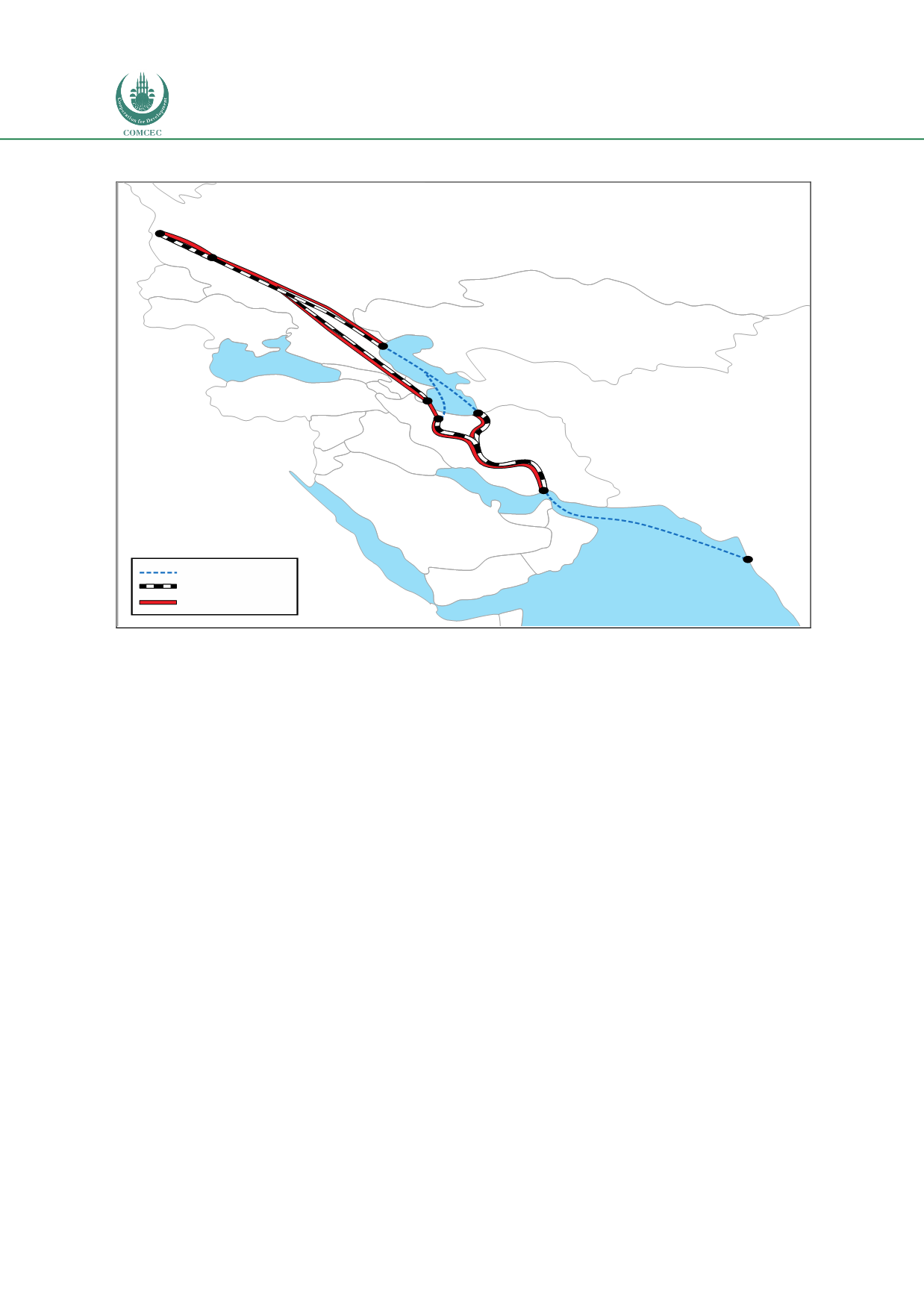

Improving Transnational Transport Corridors
In the OIC Member Countries: Concepts and Cases
154
Figure 56: Multimodal INSTC corridor
Source: Fimotions (2017).
The land part, covering the majority of the full distance has paralleled road and rail
connections. Within the INSTC Iran plays a pivotal role, as it is the centerpiece of the corridor,
and due to its port Bandar Abbas and the hub role in the rail logistics of the corridor (Dikshit,
2012).
The main goal of the establishment of the INSTC routes is to offer lower transit costs and times
than the traditional route. Therefore, unlike many other transport corridors where politic is
the main driver,
the main driver of INSTC is economy
.
4.7.2.
Political and Institutional Factors
Along the INSTC, there is no political tension among the member states. As such, no border
closing exists on this corridor. This is not only an advantage but also a very important
precondition for a successful transport corridor.
From the organizational point of view, the policy maker of this corridor is the Coordination
Council, which consists of the Deputy Ministers of the member countries that meet once a year
(Soleimani, 2017). The INSTC Secretariat is based in Tehran. Focal points have been envisaged
in New Delhi, Moscow and in Baku. In the period of 2001 – 2015, the secretariat was under the
responsibility of the Iranian Road Maintenance and Transportation Organization. Since 2016,
this falls under the responsibility of the Ministry of Road and Urban Development.
Maritime Transport
Rail Transport
Road Transport
AZER-
BAIJAN
St. Petersburg
UKRAINE
TURKEY
BLACK SEA
CASPIAN SEA
RED SEA
GULF OF OMAN
RUSSIA
Moscow
Astarakhan
Amir
Abad
Rasht
Astara
Bandar
Abbas
Mumbai
YEMEN
OMAN
IRAN
KAZAKHSTAN
IRAQ
SAUDI
ARABIA
















